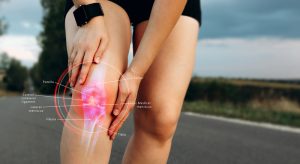Bunionectomy
A bunion is a bump that forms at the base of the big toe. These form as a result of prolonged stress on the joints, which is often associated with wearing poorly fitting shoes. With time, the bone structure changes, making it painful to wear the same shoes or walk. Bunions are more common in women due to the tighter nature of many shoes, but there are other factors such as genetics and arthritis that can also cause bunions.
There are many conservative treatment options available to individuals who have this deformity. Most of the time, simple changes such as switching to wider shoes can relieve the pain, but in the case of severe foot and ankle pain, a surgical procedure known as a bunionectomy may be recommended.
If you are interested in learning more about the available treatment options for foot and ankle pain, contact our team at BEST Health System and get started on your path to recovery. In the meantime, check out this guide designed to help you understand bunion development and treatment options.
When to consider surgery
If conservative therapies are ineffective, a patient may be recommended for surgery. When a patient begins the process, they should expect to undergo a full evaluation to determine the best surgical approach.
Surgical options vary depending on the size and severity of the bunion, the patient’s age, the presence of other medical conditions, and the health of the surrounding soft tissue. If a patient has a severe bunion, a bunionectomy may be recommended, which is when a large portion of the bone is removed. Next, the surgeon will realign the toe and reposition the soft tissue. Less severe bunions, on the other hand, may only need the removal of the enlarged portion without cutting and realigning the bone.
Bunionectomy recovery
After the procedure, patients will be stabilized in the recovery area where members of the surgical team will check that vital signs are normal. After a patient is released, they will typically be recommended for physical therapy to help regain strength and range of motion in the foot.
It is very important that a patient follows the surgeon’s directions after surgery, or else further damage could occur. The patient should avoid wearing narrow shoes and should be careful when participating in physical activities during the recovery process.
Learn more about bunion treatment options by calling BEST Health System
When it comes to your health, decision-making is half the battle. Allow the experienced medical professionals at BEST Health System to take some of the stress off your plate. Connect with our team and get started on your path to recovery today.
Procedure Doctors
Related Articles
The Seven Benefits of Minimally Invasive Surgery
What is Minimally Invasive Treatment? Minimally invasive surgery is an alternative to traditional surgery that yields better results, quicker recoveries, and fewer hospital visits. This […]
What is Knee Replacement Surgery
The Causes of Knee Pain With age, knee pain becomes a common health condition that many adults suffer from. What begins as minimal, infrequent pain […]
Why You Should Consider a Minimally Invasive Procedure
What is Minimally Invasive Surgery? Prior to medical advancements in the 1980s, traditional procedures, such as open back surgery, were a patient’s only option. Today, […]
Four Treatment Options for Tarsal Tunnel Syndrome | BEST
Similar to carpal tunnel syndrome in the wrists, tarsal tunnel syndrome is a condition that can cause severe ankle pain for those affected. The tarsal […]
Five Treatment Options to Help with any Type of Tendonitis
Tendonitis, also spelled tendinitis, is an injury caused by inflammation and damage to tendons. In the body, tendons are tough flexible pieces of cartilage that […]
Is it Time to Consider ACL Surgery? Watch Out for These Signs
movement changes or direct trauma to the knee through collision. This is why ACL tears are so common among football players, basketball players, and soccer players.





